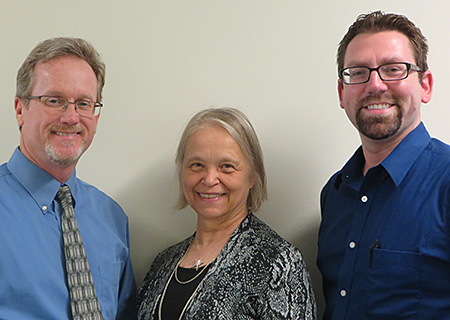Aug. 25, 2016
 Donors are propelling the profession forward by supporting R.T.-led research projects like the one completed by William L. Hubble, M.A., R.T.(R)(N)(CT), CNMT, FSNMMI-TS; James Austin Turner, M.S., R.T.(MR), CNMT, PET; and Rita M. Heuertz, Ph.D., M.T.(ASCP). Their research was made possible by a $10,000 donor-funded research grant from the ASRT Foundation in November 2013.
Donors are propelling the profession forward by supporting R.T.-led research projects like the one completed by William L. Hubble, M.A., R.T.(R)(N)(CT), CNMT, FSNMMI-TS; James Austin Turner, M.S., R.T.(MR), CNMT, PET; and Rita M. Heuertz, Ph.D., M.T.(ASCP). Their research was made possible by a $10,000 donor-funded research grant from the ASRT Foundation in November 2013.
Foundation donor support empowered the trio to investigate the effectiveness of disinfection practices on medical equipment in a radiology department. Infection control is something that is always a concern in the medical field, yet little research has been done specific to its application in imaging departments. Most of the research surrounding this important topic is broad and doesn’t offer specific, tailored results and recommendations that pertain to the daily activities of medical professionals.
This project investigated something medical imaging and radiation therapy staff do every day that directly impacts the profession. While the team focused on nuclear medicine because of the high risk of bacterial growth, its methods and study results are applicable for all modalities of radiologic technology. William, James and Rita’s evaluation of infection control practices within an imaging department found that while the methods were effective, the timing was not optimal. Many pieces of equipment were disinfected only once a day, despite numerous patients moving through the department on any given day. They discovered that bacteria could grow between the daily disinfecting, increasing the potential for infection to spread. Over the course of their research, they developed recommendations that departments can use to evaluate their infection control procedures and then improve on them.
Sharing what is learned is an important part of conducting research and is how advancements in the profession are made. After finishing their research, William, James and Rita published their findings and recommendations in the 2016 January/February issue of Radiologic Technology. They also presented their discoveries at the 62nd Society of Nuclear Medicine and Molecular Imaging conference in Baltimore, Maryland, in June 2015. They hope to continue sharing the information that donors made possible by presenting it at other regional conferences.
It’s important that research grant opportunities continue to be available to the medical imaging and radiation therapy community. This vital source of funding enables R.T.s to expand the knowledge base of the profession and improve patient care. If not for the grant that donors funded, William, James and Rita might not have been able to conduct their research, leaving the valuable knowledge undiscovered.
It’s difficult to find funding for R.T.-specific research projects because they rarely qualify for other types of grants. The research grants the Foundation awards go specifically to projects that will help improve the radiologic sciences, just as William, James and Rita’s research did. You can be a part of advancing the profession by supporting the Foundation. One hundred percent of all donations go toward opportunities like research grants that empower R.T.s to move the profession forward. Just as previous donors helped fellow R.T.s find ways to prevent the spread of infection in an imaging department, you and your gift to the Foundation can play a vital role in creating a strong future for the radiologic sciences through research.
Photo, from left: William L. Hubble, M.A., R.T.(R)(N)(CT), CNMT, FSNMMI-TS; Rita M. Heuertz, Ph.D., M.T.(ASCP); and James Austin Turner, M.S., R.T.(MR), CNMT, PET.